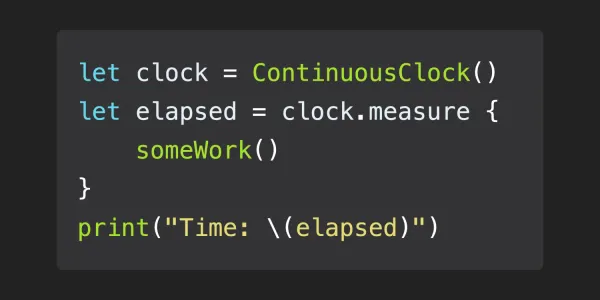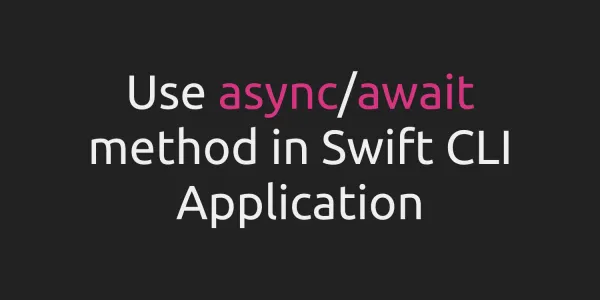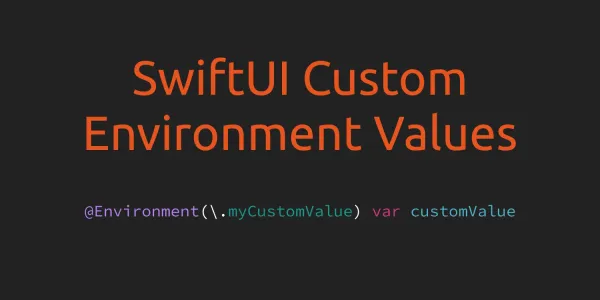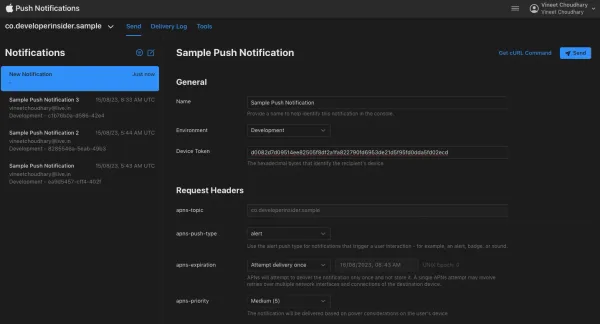Overview
- Floating-point numbers are numbers with a fractional component, such as 3.14159, 0.1, and -273.15.
Floatrepresents a 32-bit floating-point number.
1. Converting Floating-Point Values
1.1 init(_:)
- Creates a new instance that approximates the given value.
let x: Double = 21.25
let y = Float(x)
print(y)
//prints 21.25
1.2 init(signOf:magnitudeOf:)
- Creates a new floating-point value using the sign of one value and the magnitude of another.
let a = -21.5
let b = 305.15
let c = Double(signOf: a, magnitudeOf: b)
print(c)
//prints -305.15
1.3 init(sign:exponent:significand:)
- Creates a new value from the given sign, exponent, and significand.
let z = Double(sign: .plus, exponent: -2, significand: 1.5)
print(z)
//prints 0.375
2. Performing Calculations
2.1 Floating-Point Operators for Float
- Perform arithmetic and bitwise operations or compare values.
print(a + b)
//prints 283.65
print(a - b)
//prints -326.65
print(a * b)
//prints -6560.725
print(a / b)
//prints -0.0704571522202196
a += b
print(a)
//prints 283.65
a -= b
print(a)
//prints -21.5
a *= b
print(a)
//prints -6560.725
a /= b
print(a)
//prints -21.5
2.2 squareRoot()
- Returns the square root of the value, rounded to a representable value.
func hypotenuse(_ a: Double, _ b: Double) -> Double {
return (a * a + b * b).squareRoot()
}
let (dx, dy) = (3.0, 4.0)
let distance = hypotenuse(dx, dy)
print(distance)
//prints 5.0
2.3 remainder(dividingBy:)
- Returns the remainder of this value divided by the given value.
let q = (x / 0.75).rounded(.toNearestOrEven)
let r = x.remainder(dividingBy: 0.75)
print(q,r)
// prints 28.0 0.25
2.4 negate()
- Replaces this value with its additive inverse.
var k = 21
k.negate()
print(k)
//prints -21
3. Rounding
3.1 rounded()
- Returns this value rounded to an integral value using “schoolbook rounding.”
let m = 6.5
print(m.rounded(.toNearestOrAwayFromZero))
// prints 7.0
print(m.rounded(.towardZero))
//prints 6.0
print(m.rounded(.up))
//prints 7.0
print(m.rounded(.down))
//prints 6.0
3.2 round()
- Rounds this value to an integral value using “schoolbook rounding.”
var j = 5.2
j.round()
print(j)
// prints 5.0
var h = 5.5
h.round()
print(h)
//prints 6.0
var g = -5.5
g.round()
print(g)
//prints -5.0
4. Comparing Floats
4.1 comparison
print(a > b)
//prints false
print(a < b)
//prints true
print(a <= b)
//prints true
print(a >= b)
//prints false
print(a == b)
//prints false
4.2 maximum(::)
Returns the greater of the two given values.
print(Double.maximum(10.0, -25.0))
//prints 10
4.3 minimum(::)
- Returns the lesser of the two given values.
print(Double.minimum(10.0, -25.0))
//prints -25.0
5. Finding the Sign and Magnitude
5.1 magnitude
- The magnitude of this value.
let num1 = -259.0001
print(num1.magnitude)
//prints 259.0001
5.2 sign
- The sign of the floating-point value.
let num1 = -259.0001
print(num1.sign)
//prints minus
6. Querying a Float
6.1 ulp
- The unit in the last place of this value.
let num2 = 0.23
print(num2.ulp)
//prints 2.77555756156289e-17
6.2 significand
- The significand of the floating-point value.
let num3 = 9.91
print(num3.significand)
//prints 1.23875
6.3 exponent
- The exponent of the floating-point value.
let num3 = 9.91
print(num3.exponent)
//prints 3
6.4 nextUp
- The least representable value that compares greater than this value.
let num4 = 10.0
print(num4.nextUp)
//prints 10.0
6.5 nextDown
- The greatest representable value that compares less than this value.
let num4 = 10.0
print(num4.nextDown)
//prints 10.0
6.6 binade
- The floating-point value with the same sign and exponent as this value, but with a significand of 1.0.
print(num4.binade)
//prints 8.0
7. Accessing Numeric Constants
7.1 pi
- The mathematical constant pi.
print(Double.pi)
//prints 3.14159265358979
7.2 infinity
- Positive infinity.
let x1 = Double.greatestFiniteMagnitude
let y1 = x1 * 2
print(y1)
//prints inf
7.3 greatestFiniteMagnitude
- The greatest finite number representable by this type.
let x1 = Double.greatestFiniteMagnitude
print(x1)
//prints 1.79769313486232e+308
7.4 nan
- A quiet NaN (“not a number”).
let x1 = Double.greatestFiniteMagnitude
print(x1 > Double.nan)
//prints false
7.5 signalingNaN
- A signaling NaN (“not a number”).
let x1 = Double.greatestFiniteMagnitude
print(x1 > Double.signalingNaN)
//prints false
7.6 ulpOfOne
- The unit in the last place of 1.0.
let x1 = Double.greatestFiniteMagnitude
print(x1 > Double.ulpOfOne)
//prints true
7.7 leastNormalMagnitude
- The least positive normal number.
let x1 = Double.greatestFiniteMagnitude
print (x1 < Double.leastNormalMagnitude)
//prints false
7.8 leastNonzeroMagnitude
- The least positive number.
let x1 = Double.greatestFiniteMagnitude
print (x1 < Double.leastNonzeroMagnitude)
//prints 4.94065645841247e-324
8. Working with Binary Representation
8.1 bitPattern
- The bit pattern of the value’s encoding.
let num5 = 3000.00000
print(num5.bitPattern)
//prints 4658815484840378368
8.2 significandBitPattern
- The raw encoding of the value’s significand field.
let num5 = 3000.00000
print(num5.significandBitPattern)
//prints 2093470139285504
8.3 exponentBitPattern
- The raw encoding of the value’s exponent field.
let num5 = 3000.00000
print(num5.exponentBitPattern)
//prints 1034
8.4 significandWidth
- The number of bits required to represent the value’s significand.
let num5 = 3000.00000
print(num5.significandWidth)
//prints 8
9. Querying a Float's State
9.1 isZero
- A Boolean value indicating whether the instance is equal to zero.
let num5 = 3000.00000
print(num5.isZero)
//prints false
9.2 isSubnormal
- A Boolean value indicating whether the instance is subnormal.
let num5 = 3000.00000
print(num5.isSubnormal)
//prints false
10. Describing a Float
10.1 description
- A textual representation of the value.
let num5 = 3000.00000
print(num5.description)
//prints 3000.0
10.2 debugDescription
- A textual representation of the value, suitable for debugging.
let num5 = 3000.00000
print(num5.debugDescription)
//prints 3000.0
10.3 customMirror
- A mirror that reflects the Float instance.
let num5 = 3000.00000
print(num5.customMirror)
//prints Mirror for Double
10.4 hashValue
- The number’s hash value.
print(num5.hashValue)
//prints 4658815484840378368
Next - Double by Example







